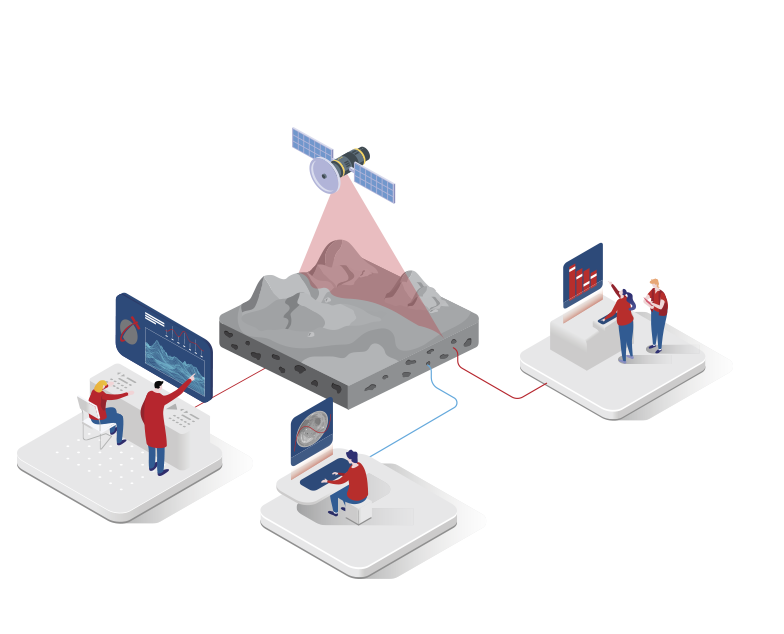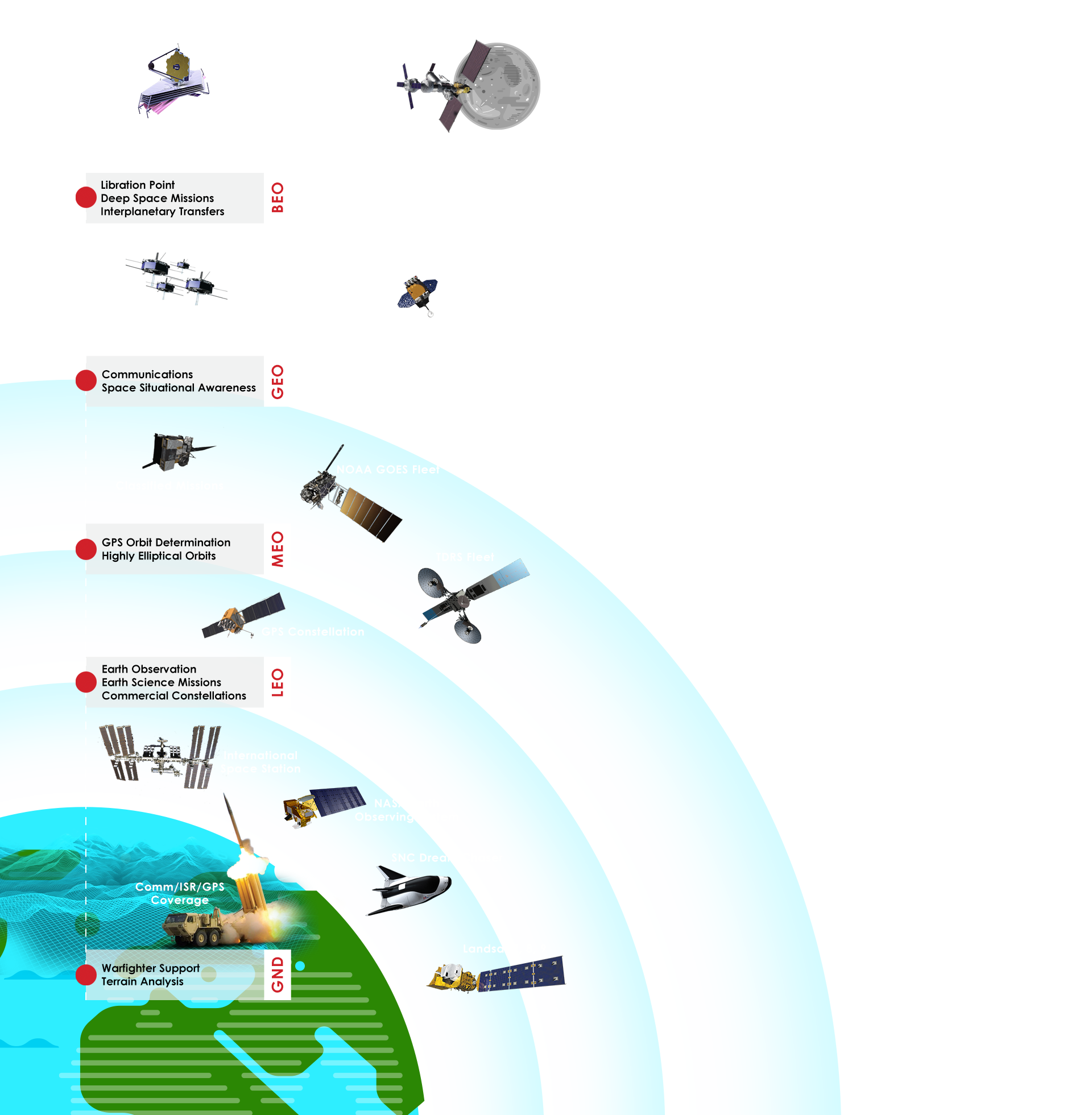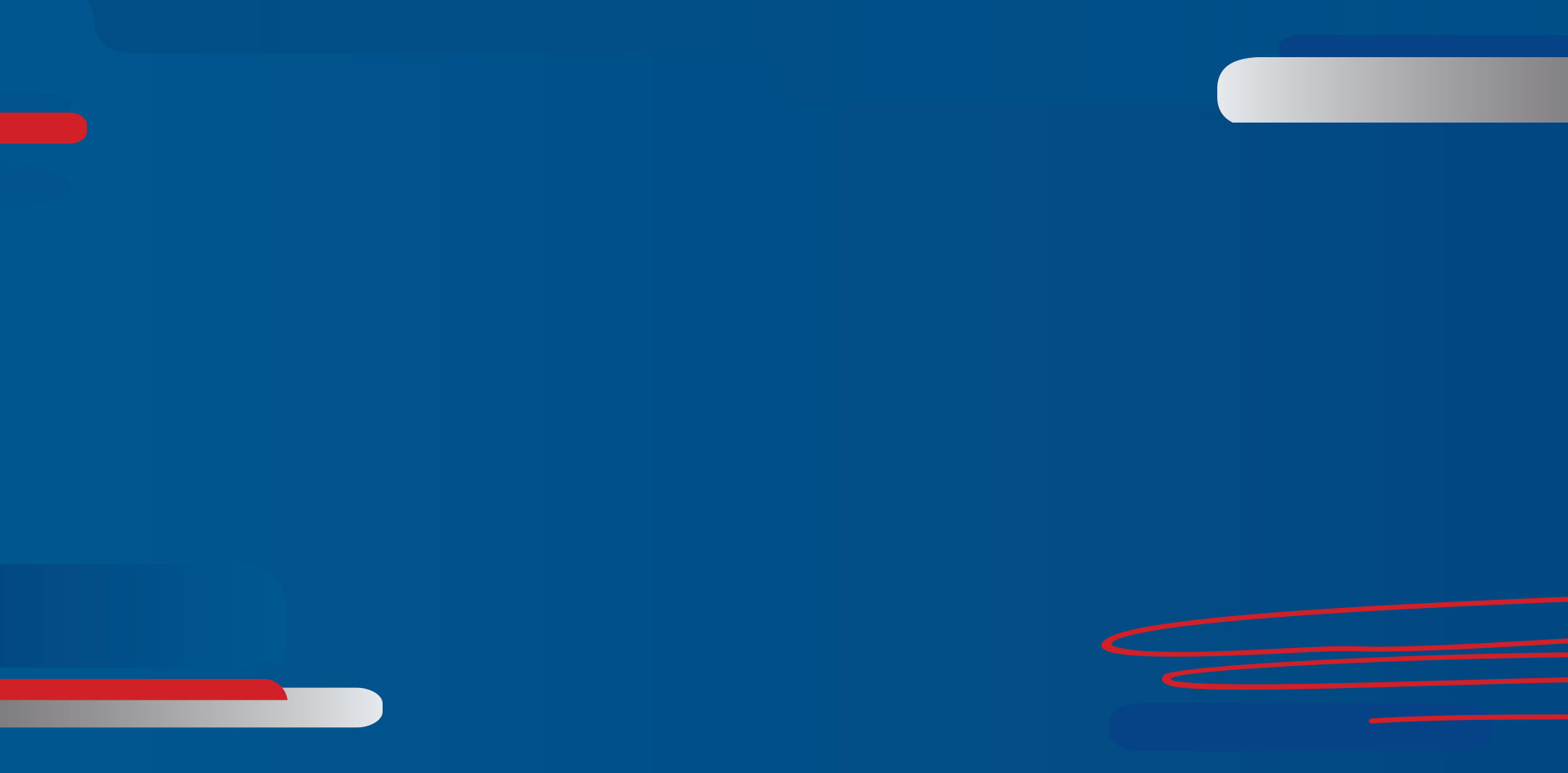FreeFlyer® Software License Agreement
PLEASE READ BEFORE USE
Space Systems & Commercial Services Operating Unit
4500 Forbes Boulevard
Suite 300
Lanham, MD 20706
Revision Date: 03/31/2024
Revision: 13
Software License Agreement
This Software License Agreement (the "Agreement") is a legal agreement between a.i. solutions, Inc. (“Licensor”), and the original user ("Licensee" or "You") for Licensor’s FreeFlyer commercial computer software and accompanying computer software documentation ("Software"). By continuing the installation of the Software, including loading or running the Software, or placing or copying the Software onto your physical or virtual computer hard drive or cloud location, you agree to be bound by the terms of this Agreement. You also agree to ensure that all authorized users of the Software fully comply with this Agreement. If you or your authorized users do not intend to fully comply with the terms of this Agreement, promptly return the Software to Licensor.
1. Grant of License Rights.
Licensor grants you the nonexclusive rights to use the Software following the terms of this Agreement. "Use" means loading the Software into RAM, including installation on a hard disk or another storage device, and operating the Software following the terms of this Agreement. Use includes displaying, distributing, and reproducing the Software following the terms of this Agreement. You may not rent, lease, modify, translate, disassemble, decompile, reverse engineer, or create derivative works based on the Software.
2. Installation and Use of the Software.
Specific rights, obligations, and restrictions apply to each license type, term, and payment as defined in Sections 3-6.
3. Node-Locked, Network, and Dongle Licenses
- Node-Locked. A single computer license option. The license is for a single computer associated with the physical or virtual computer’s Disk Serial Number or another unique identifier.
- Network License. A multiple license option. The license is associated with a named network server.
- Dongle License. A single dongle license option. The license is associated with a named hardware dongle key.
4. Numbers of Authorized Users for Node-Locked, Network, and Dongle Licenses
- Node-Locked. The Software may only be used on a single, designated computer, provided the computer is not a network server and the Software is used from that computer's console by only one licensed user at a time. This usage is not applicable or allowed for containers but is authorized for virtual machines. Licensee may re-designate the license to a different computer per a separately executed FreeFlyer software license transfer agreement (SLTA) AIS-FFSLTA-101.
- Network Named Server. The Software may only be licensed in a central location on a single designated network server connected to multiple client computers and/or containers. However, Licensee may have only as many licensed users simultaneously operating the Software at any time as the number of network licenses acquired.
- Dongle. The Software may be installed on multiple designated computers and only operated when a Licensee-provided secure USB dongle is connected to a designated computer. Licensee may have only as many licensed users simultaneously operating the Software as the number of dongles acquired.
5. Term of the Agreement.
Licensee’s rights to use the Software are limited by the time (term) purchased (temporary or perpetual) and as otherwise specified by this Agreement. Licensee may purchase temporary or perpetual licenses.
- Temporary License. Licensee may use the Software for 3-12 months, depending upon the term purchased. If the Licensee purchases an equivalent of three successive annual (12-month) licenses and complies with payment and all other terms of this Agreement, Licensor will grant the Licensee a perpetual license to use the Software.
- Perpetual License. The Licensee may perpetually use the Software following the terms of this Agreement.
6. Payment.
If you purchase the Software, Licensee shall make full payment (100%) of the license price before downloading or using the Software or, if authorized by Licensor, you may pay under the finance terms summarized below.
- Full Payment. Licensee agrees to fully pay (100%) for the license type purchased under Sections 3, 4, and 5 before downloading or using the Software.
- Financed Payment for Perpetual Licenses. If authorized in writing by Licensor, Licensee may make financed payments for perpetual licenses. Licensee must pay 120% of the perpetual license price as a condition of downloading and using the Software, and as follows:
- Licensee must pay 40% of the total payment annually in the three successive years following the Licensee's downloading or using the Software.
- Licensee must make the first 40% annual financing payment in full for this Agreement to be effective.
- No later than one calendar year after making the first financing payment in full, the Licensee shall make the second 40% financing payment.
- No later than one calendar year after making the second financing payment in full, the Licensee shall make the third 40% lease payment.
- Upon making all three annual financing payments in full, Licensor shall grant Licensee a perpetual license to use the Software.
- A grace period of up to half the most recent temporary license term is allowed between payments. If Licensee fails to make any finance payment in full or on time after the grace period, this Agreement is automatically revoked per Section 15.
- This process is described as the “Lease” program in Licensor marketing and quotes.
7. Compliance with U.S. Export Laws and Regulations.
This Agreement is subject to all applicable laws, regulations, orders, or other restrictions on exports of U.S. origin items or services that may be enacted from time to time by the United States of America Government or any agency thereof, including, but not limited to, the U.S. Export Administration Regulations, 15 C.F.R. Parts 730-774 (all such laws, orders, and regulations referred to herein as “U.S. Export Control Laws”). Licensee agrees and assures Licensor that Licensee shall not export, ship, transmit, assign, transfer control, transfer registration, or disclose (directly or indirectly) the Software (including any technology and information in connection in addition to that), except in a manner consistent with U.S. Export Control Laws.
Licensee also agrees that it shall not use the Software in any way or for any purpose that requires an export license or other governmental approval without (i) receiving the prior written consent of Licensor, which consent may be withheld at the exclusive discretion of Licensor; (ii) obtaining all applicable export licenses and government approvals; and (iii) paying all associated fees and expenses. Licensee shall prevent and promptly report to Licensor all unauthorized exports, shipments, transmissions, assignments, deemed exports, transfers of control, transfers of registration, disclosures, or uses of the Software (including any technology and information in connection with the use of the Software) of which Licensee has knowledge or belief.
Licensee warrants that it is not currently the subject of (i) any law, regulation, or executive order imposed by the United States, including but not limited to those enforced by the U.S. Treasury Department’s Office of Foreign Assets Control and the U.S. Department of State, which subjects any person – individual or entity – to any asset freezes, prohibition on engaging in transactions with U.S. persons, prohibition on the export from the United States (or re-export) of goods or services, or any other restriction; or (ii) any law, directive, or regulation of the European Union or any of its Member States related to the similar subject matter, (all such laws, regulations, orders, or other restrictions referred to herein as “Economic Sanctions”). Licensee further warrants that it is not (i) 50 percent or more owned, directly or indirectly, by any persons (individuals or entities) that are the subject of any Economic Sanctions; or (ii) owned or controlled in any manner by any person (individual or entity) that is the subject of any Economic Sanctions. Licensee shall give prompt written notice to Licensor as soon as it becomes aware of any changes to Licensee’s warrants under this Section.
Licensee additionally warrants that it is not currently a party to any agreement with or subject to any restrictions or requirements by the U.S. Department of Treasury Committee on Foreign Investment in the United States (CFIUS) under Section 721 of the Defense Production Act, 50 U.S.C. § 4565, as amended, that may limit or otherwise impede Licensee’s ability to fully comply with its export and other obligations under the Agreement. Licensee will give prompt written notice to Licensor as soon as it becomes aware of any such agreement, restrictions, or requirements by CFIUS.
8. Copyright.
The Software is an original work of authorship and is solely owned by Licensor. The Software is protected by United States copyright laws and international copyright treaties. Licensee agrees to use the Software consistent with the appropriate license granted under Sections 1 and 3 and may make one copy of the Software solely for backup or archival purposes. Licensee may not otherwise copy (reproduce), distribute, or display the Software, in whole or in part, to others.
9. Limited Warranty.
Licensor warrants that if properly installed and operated on the computer for which it is designed, the Software will successfully perform for its intended purpose for ninety (90) days from the date of receipt. Licensor's entire liability and your exclusive remedy shall be, at Licensor's option, either (a) return of the price paid or (b) repair or replacement of the Software that does not meet Licensor's Limited Warranty. To make a warranty claim, return the Software to Licensor, along with a description of the problem. This Limited Warranty is void if failure of the Software has resulted in whole or in part from accident, abuse, misapplication, or violation of this Agreement. Any replacement Software will be warranted for the remainder of the original warranty period or thirty (30) days, whichever is longer. This warranty allocates risks of product failure between Licensee and Licensor. Licensor's product pricing reflects this allocation of risk and the limitations of liability contained in this warranty.
10. NO OTHER WARRANTIES.
A.I. SOLUTIONS, INC. DISCLAIMS ALL OTHER WARRANTIES, EITHER EXPRESS OR IMPLIED, INCLUDING BUT NOT LIMITED TO IMPLIED WARRANTIES OF MERCHANTABILITY OR FITNESS FOR A PARTICULAR PURPOSE CONCERNING SOFTWARE AND THE ACCOMPANYING WRITTEN MATERIALS. THIS LIMITED WARRANTY GIVES YOU SPECIFIC LEGAL RIGHTS. YOU MAY HAVE OTHERS THAT VARY FROM JURISDICTION TO JURISDICTION. A.I. SOLUTIONS, INC. DOES NOT WARRANT THAT THE OPERATION OF THE SOFTWARE WILL BE UNINTERRUPTED, ERROR-FREE OR MEET LICENSEE'S SPECIFIC REQUIREMENTS. THE WARRANTY SET FORTH ABOVE IS INSTEAD OF ALL OTHER EXPRESS WARRANTIES, WHETHER ORAL OR WRITTEN.
11. Exclusive Remedies.
You agree that its exclusive remedy against Licensor, its affiliates, contractors, suppliers, and agents for loss or damage caused by any defect or failure in the Software, regardless of the form of action, whether in contract, tort, including negligence, strict liability or otherwise, shall be the return of the purchase price paid or replacement of the Software. This Agreement shall be construed under and governed by the laws of the State of Maryland. United States laws and international treaties will govern copyright and other proprietary matters. IN ANY CASE, A.I. SOLUTIONS, INC. SHALL NOT BE LIABLE FOR LOSS OF DATA, LOSS OF PROFITS, LOST SAVINGS, SPECIAL, INCIDENTAL, CONSEQUENTIAL, INDIRECT OR OTHER SIMILAR DAMAGES ARISING FROM BREACH OF WARRANTY, BREACH OF CONTRACT, NEGLIGENCE, OR OTHER LEGAL THEORY EVEN IF A.I. SOLUTIONS, INC. HAS BEEN ADVISED OF THE POSSIBILITY OF SUCH DAMAGES, OR FOR ANY CLAIM BY ANY OTHER PARTY. Some jurisdictions do not allow the exclusion or limitation of incidental or consequential damages, so the above limitation or exclusion may not apply to you.
12. U.S. Government End Users.
The following regulations apply if the end-user is a branch or agency of the United States Government. The Software is “commercial computer software” and “commercial computer software documentation” as such terms are defined in 48 C.F.R. 12.212 and are provided to the Government i) for acquisition by or on behalf of civilian agencies, consistent with the policy outlined in 48 C.F.R. 12.212; or ii) for acquisition by or on behalf of the Department of Defense, consistent with the requirements outlined in 48 C.F.R. 227.7202-1 and 227.7202-3.
13. Third-Party Content.
While using the Software, Licensee may elect to use other third-party products or services in connection with the Software. Your use of any third-party products or services may be subject to a separate agreement between you and the third-party provider. Licensor is not responsible for any access to or use of your data by third-party providers or their products or services or for the security or privacy practices of any third-party provider or its products or services. Licensee is responsible for carefully reviewing the Agreement between the Licensee and the third-party provider. Licensor disclaims all liability and responsibility for any third-party products or services or the acts or omissions of any third-party providers or vendors.
14. Entire Agreement.
This Agreement includes any sales agreement, purchase order, or other such commercial transaction agreement between the Licensor and the Licensee, which specifies the license type, term, and payment for the Software.
15. Applicable Laws and Regulations.
This Agreement shall be governed and construed following the State of Maryland, U.S.A laws. Per Section 12, if you are using the Software for or on behalf of the United States Government, this Agreement shall additionally be governed by applicable federal procurement regulations in 48 C.F.R. and Agency-level supplements.
16. General Provisions.
Neither this Agreement nor any part or portion hereof shall be assigned, sublicensed, or otherwise transferred by you. Should any provision of this Agreement be held to be void, invalid, unenforceable, or illegal by a court, the validity and enforceability of the other provisions shall not be affected thereby. If any provision is determined to be unenforceable, you agree to a modification of such provision to provide for enforcement of the provision's intent to the extent permitted by applicable law. Failure of a party to enforce any provision of this Agreement shall not constitute or be construed as a waiver of such provision or the right to enforce such provision. If you fail to comply with any terms of this Agreement, YOUR LICENSE IS AUTOMATICALLY TERMINATED. After notification of termination from Licensor, Licensee agrees to immediately destroy all related copies of the Software and associated License files and to notify Licensor promptly.
YOU ACKNOWLEDGE THAT YOU HAVE READ THIS AGREEMENT, THAT YOU UNDERSTAND THIS AGREEMENT, AND UNDERSTAND THAT BY CONTINUING THE INSTALLATION OF THE SOFTWARE, BY LOADING OR RUNNING THE SOFTWARE, OR BY PLACING OR COPYING THE SOFTWARE ONTO YOUR COMPUTER HARD DRIVE, YOU AGREE TO BE BOUND BY THIS AGREEMENT'S TERMS AND CONDITIONS. YOU FURTHER AGREE THAT, EXCEPT FOR WRITTEN SEPARATE AGREEMENTS BETWEEN A.I. SOLUTIONS, INC. AND YOU, THIS AGREEMENT IS A COMPLETE AND EXCLUSIVE STATEMENT OF THE RIGHTS AND LIABILITIES OF THE PARTIES. THIS AGREEMENT SUPERSEDES ALL PRIOR ORAL AGREEMENTS, PROPOSALS, OR UNDERSTANDINGS AND ANY OTHER COMMUNICATIONS BETWEEN A.I. SOLUTIONS AND YOU RELATING TO THE SUBJECT MATTER OF THIS AGREEMENT.


























